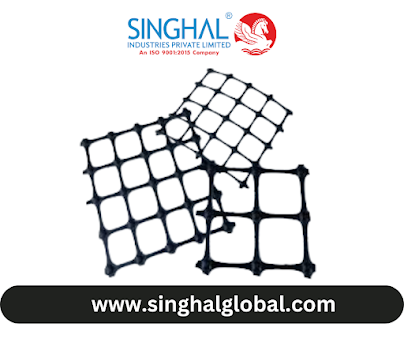Using Reflective Greenhouse Film to Boost Light Efficiency
The Role of Light in Greenhouse Farming
In greenhouse farming, optimizing light conditions is crucial for enhancing plant growth and yield. However, natural sunlight is not always sufficient, and its distribution within the greenhouse can be uneven. This is where reflective greenhouse films come into play. These films can reflect and distribute light more evenly, ensuring that all plants receive adequate light exposure.
What Are Reflective Greenhouse Films?
Reflective greenhouse films are specialized materials designed to enhance the efficiency of light use within greenhouses. They are often made from greenhouse plastic film, which is then treated with reflective coatings. These coatings can include metals like aluminum or other reflective materials that increase the reflectivity of the film. The primary function of these films is to reflect sunlight that would otherwise be absorbed by the greenhouse structure or the ground, redirecting it towards the plants instead.
Benefits of Using Reflective Greenhouse Films
Improved Light Distribution
One of the most significant benefits of using reflective greenhouse films is the improvement in light distribution. Traditional greenhouse films might allow light to pass through but do not effectively distribute it. Reflective films, on the other hand, ensure that light is spread more evenly across the greenhouse. This leads to more uniform growth conditions for plants, which is particularly beneficial in larger greenhouses.
Enhanced Photosynthesis and Growth
With better light distribution, plants can photosynthesize more efficiently. Enhanced photosynthesis translates to better growth rates and potentially higher yields. For farmers, this means increased productivity and profitability. In regions like India, where agriculture plays a critical role in the economy, the adoption of such technologies can have a substantial impact.
Energy Efficiency
Reflective greenhouse films can also contribute to energy efficiency. By maximizing the use of natural light, the need for supplemental artificial lighting is reduced. This can lead to significant energy savings, lowering the operational costs for greenhouse farmers. Given the rising energy costs, this is an important consideration for sustainable agriculture practices.
Reflective Greenhouse Films
The adoption of reflective greenhouse films in India is still in its nascent stages, but it is growing steadily. The country's diverse climatic conditions make greenhouse farming an attractive option for many farmers. Greenhouse films India, including greenhouse plastic film and greenhouse plastic films, are increasingly being recognized for their ability to improve crop production and efficiency.
Case Studies and Success Stories
Several success stories highlight the benefits of using reflective greenhouse films in India. For instance, farmers in the states of Maharashtra and Gujarat have reported significant improvements in their crop yields after switching to reflective films. These farmers have noted better plant growth, reduced energy consumption, and higher profits.
Challenges and Solutions
Despite the benefits, there are challenges to the widespread adoption of reflective greenhouse films in India. Reflective films can be more expensive than traditional greenhouse films, which can be a deterrent for small-scale farmers. However, the long-term benefits in terms of increased yields and energy savings can outweigh the initial investment.
Another challenge is the lack of awareness and technical knowledge among farmers. Many farmers are not familiar with the technology and its benefits. To address this, agricultural extension services and organizations can play a crucial role in educating farmers about the advantages of reflective greenhouse films and providing training on their installation and use.
The Future of Reflective Greenhouse Films
The future of reflective greenhouse films looks promising with ongoing technological advancements. Researchers are continuously working on improving the efficiency and durability of these films. Innovations such as self-cleaning coatings and enhanced UV protection are being developed to further boost their effectiveness.
Sustainability and Environmental Impact
Reflective greenhouse films also align with the goals of sustainable agriculture. By improving light efficiency and reducing energy consumption, they contribute to more sustainable farming practices. Additionally, the use of Greenhouse plastic film that are recyclable or biodegradable can further minimize the environmental impact.
Conclusion
Reflective greenhouse films represent a significant advancement in the field of greenhouse farming. By improving light distribution and efficiency, these films can enhance plant growth, increase yields, and contribute to more sustainable agricultural practices. In India, the adoption of reflective greenhouse films is growing, with promising results in terms of increased productivity and profitability for farmers.
By embracing innovations like reflective greenhouse films, the agricultural sector can move towards a future that is both more productive and sustainable. This not only benefits farmers but also contributes to food security and environmental conservation on a global scale.
FAQs
What is the lifespan of reflective greenhouse films?
The lifespan of reflective greenhouse films can vary based on the material and environmental conditions. Generally, high-quality films can last several years with proper maintenance.
Are reflective greenhouse films environmentally friendly?
Yes, reflective greenhouse films are environmentally friendly as they reduce energy consumption and greenhouse gas emissions. Many of these films are also recyclable.
Where can I purchase reflective greenhouse films in India?
Reflective greenhouse films can be purchased from agricultural supply stores, online retailers, and specialized manufacturers in India. It is important to choose reputable suppliers to ensure the quality of the films.


.png)
Comments
Post a Comment